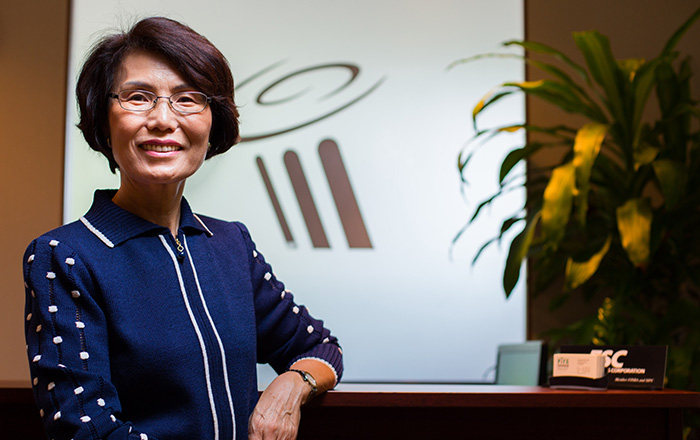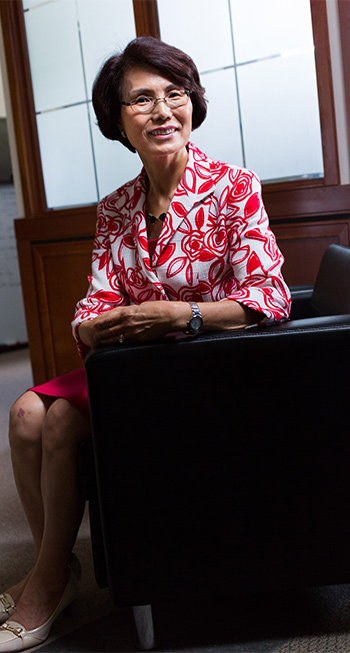Asset protection that leaves a legacy
Asset protection that leaves a legacy

Jong Oh • Blue Bell, PA
Professional Insurance & Financial Services • FSC Securities Corporation
In a tightly knit community in suburban Philadelphia, three generations of Korean-Americans trust Jong Oh to help them protect their assets. Leaving a legacy for their children and grandchildren requires hard work and sacrifice—and managing investment risk.
I am originally from Korea, but I attended college here in the U.S. and have been a resident for over 40 years. I received a tremendous opportunity to build my own business, and I want to pay that back to the Korean-American community. Working as a financial advisor allows me to do that.
After college, where I studied the sciences, I decided to switch paths and entered the insurance business. It was a natural thing over time to evolve into a full financial-planning and investment advisory practice.
After a lot of hard work, licensing, and training, I eventually started my own practice in 2000 called Professional Insurance and Financial Services. My kids think that is a pretty corny name, but I think it reflects what is important to me and my clients. I want to provide top-notch and professional products and services to all of my clients.

My business is 99.9% based on referrals. My clients come from all walks of life, but there are two main types. I have quite a few affluent professionals, especially in the medical field, and I have many small-business owners of Korean descent. But my practice is not limited in any way, and I welcome every client.
Yes, definitely. I can say that just about all of my clients have sacrificed a lot to get where they are today. It is part of the culture to want to protect what you have and to leave a legacy for your children and their children. Koreans tend to be frugal and are very concerned with saving what they have earned.
There are also some beliefs of older generations of Koreans that are old-fashioned but have to be dealt with. Some people are superstitious about life insurance, thinking it is bad luck. And many people grew up with a distrust of trying to get advice from big financial institutions, more due to the language barrier than anything else. So a lot of people were used to managing their own money, either through investing in their businesses or just keeping it in bank accounts or CDs. They also do not like to owe anyone money, so paying off a mortgage is very important.
The biggest thing is to try to quickly establish a relationship built around trust. Using another aspect of Korean culture, I tell clients that I am like a matchmaker. I am trying to find the best match between their dreams and vision for the future and ways to make their wealth grow. I also emphasize that one of my important goals is to help them transfer their assets to the next generation in a tax-efficient way. They can relate to that.
That also plays into the cultural distinctions. I am a conservative investor myself. But I have always been open to learning about new methods and communicating those to my clients.
You cannot stay ahead of inflation by parking your money in cash accounts and CDs. When I learned more about active money management, I became a convert.
A lot of my clients saw what traditional asset management did to people’s investment accounts in 2001 and 2008, even if they were not invested in stocks themselves. They are fearful about the markets—telling me that a return of zero is better than a 30% loss of their assets. Having actively risk-managed accounts is a way I can help them overcome this fear.
How do I deal with market risk and my clients’ fear of the markets? That is my dilemma—and active management provides the solution.
The world is changing fast and is so unpredictable. The markets can be volatile, but we need to find ways to beat inflation over the long-term. An actively managed approach gives me the confidence that my clients’ money is being watched over constantly by professionals in ways that I could never do myself.
When there are changes in market conditions, third-party managers can use their process, systems, and strategies to manage risk. And so my goal, like that of my clients, is not to chase the highest returns, but to provide returns that will outperform the most conservative investments over time. We want to leverage and compound fairly slow and steady returns year after year. This works well with the attitudes of the majority of my clients.
 I evaluate each client’s risk profile and walk them through the process. While we have some sophisticated tools for that, it also has to be broken down into real terms that can be easily understood.
I evaluate each client’s risk profile and walk them through the process. While we have some sophisticated tools for that, it also has to be broken down into real terms that can be easily understood.
I will take their investable assets and literally write down what a loss of 20%, 30%, or 40% might mean to their portfolios in actual dollar terms. I also explain how if one takes a 40% loss to a portfolio, it takes far more than a 40% gain to make it up.
Through this give and take, I can explain the balance between risk and return, and the fact that going for the highest returns with no risk management might take them to a place they do not want to be. The account actively managed over many years should be a better choice—for their comfort level and their returns, rather than trying to ride out the highest highs and lowest lows of pure market returns.
I also stress that the approach I use is very well-diversified. With active management, we are not just diversified with stocks, but with different asset classes and strategies both in equities and within asset classes.
Overall, while it takes some explanation, this is an investment approach that fits in very nicely with the needs of my clients, though it is not the only tool I use for managing assets. My clients are not looking to take big chances with their assets, their retirement, or their legacies. The focus of active money management on controlling risk and volatility works well for meeting the needs of my clients.
Disclosure: Jong Oh is a financial advisor with Professional Insurance & Financial Services (PIFS) in Blue Bell, PA. Securities and advisory services offered through FSC Securities Corporation, member FINRA/SIPC. Insurance services offered through PIFS, which is not affiliated with FSC Securities Corporation.
Photography by Michael Branscom

